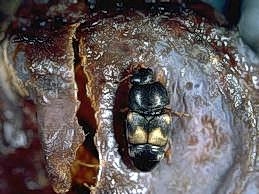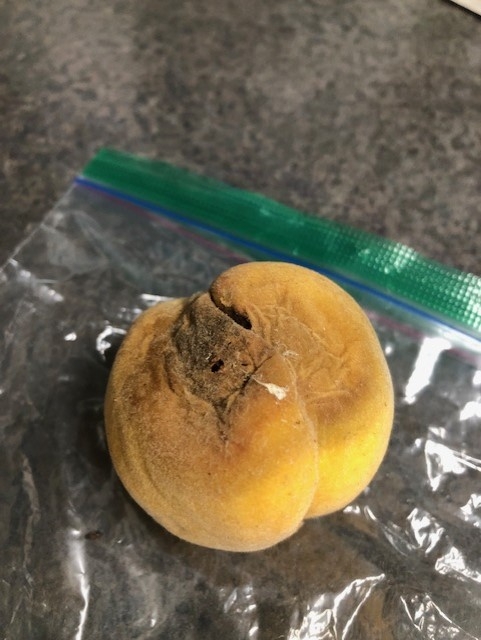
The adult beetles are small (1/8 inch), slender, black beetles with dull yellow wing bands. The larvae are white, short-legged grubs. They are especially attracted to overripe, broken, fermenting, and dried fruits, and are common in orchards, drying sheds, and on fruit trays. The adults lay their eggs on ripe and rotting fruits of all types. They may also infest grapes before they have been completely dried and made into raisins. Fig varieties that have large "eyes" (openings at the blossom ends of fruits) are most affected; fig varieties such as 'Mission' and 'Tina' have small eyes, and are less infested by the beetles.
A complete life cycle of the dried fruit beetle may vary from a minimum of 15 days in the summer to several months in the winter. In winter, both adults and larvae survive in decaying cull fruit of any kind. The pupae generally overwinter in the soil.

Sanitation is the best way of controlling dried fruit beetles. Eliminate potential breeding sites by harvesting ripe fruit promptly and picking up fallen fruit as soon as possible. Keep cull fruit in tight garbage cans or garbage bags until disposed of. If you dry fruit, you should thoroughly clean your drying trays after each use.
You may want to try trapping to reduce dried fruit beetle infestations. To do this, place several overripe peaches in a bucket, then coat the insides of the bucket with 90-weight oil, Tanglefoot, or a similar sticky material. Once the buckets are hanging in the tree, the fermenting peaches attract the beetles, and they become trapped in the sticky material. This method will give you partial control only.
Ed Perry is the emeritus Environmental Horticultural Advisor for University of California Cooperative Extension (UCCE) in Stanislaus County where he worked for over 30 years.

